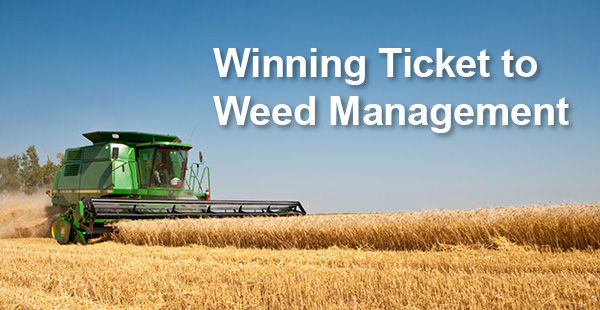Diversification a Winning Ticket to Weed Management in the Northern Plains
May 17, 2018

If you’re fighting weed resistance year after year, it might be time to do something different.
“The best tool to limit resistance and weed pressure is through diversification of your crop portfolio," says Kirk Howatt, associate professor of weed science at North Dakota State University. "Growers need to rotate crops consistently to alter their crop protection strategy to keep weeds at bay and seed banks low.
“On top of that, herbicide programs that consistently reduce weed populations are a grower’s best bet."
Howatt also notes that programs including both a pre- and post-emergence application can boost yield potential.
Multiple species like green foxtail and wild oats have developed resistance to both Group 1 and Group 2 herbicides and require an integrated weed management program.1
Best practices suggest using a multipronged approach to minimize yield loss from weed pressure and limit risk of resistance. These programs will consider a number of different factors, including site of action, timing and level of control. Solid programs target both grasses and broadleaf weeds through herbicide diversification.
“Every year growers need to ensure they have an effective plan in place that can limit losses from weed competition and give them their best chance at zero tolerance control,” says Ian Scholer, Bayer cereal herbicides product manager. “Making sure fields are clean early and keeping them that way gives you the best chance at success.”
Scholer recommends looking for solutions that give you complete control with the most operational flexibility and multiple classes of chemistry. Growers should use products that provide clean fields from burndown through harvest, he adds.
“With wide tankmix compatibility, Olympus® is a very effective solution that offers powerful burndown that suppresses pressure from grasses and tough brome species,” he says.
For post-emergence options, Scholer says there are few options available that can fit a number of operations like Huskie® Complete and Varro® herbicides.
Huskie Complete is an all-in-one broadleaf and grass herbicide with multiple sites of action, including a strong Group 27 and a wide window of application, making it an ideal tool for resistance management.
Growers looking to have more rotational flexibility should consider a herbicide like Varro, Scholer says. It can be tankmixed easily with a variety of broadleaf herbicides and allows for growers to plant pulse crops behind wheat without any lingering residual effects.
Have questions about minimizing weed competition or improving grain quality in your cereals crops? Contact Bayer at 1-866-99-BAYER or send us a message through our online form.
©2019 Bayer CropScience LP, 2 T.W. Alexander Drive, Research Triangle Park, NC 27709. Always read and follow label instructions. Bayer, the Bayer Cross, Huskie Complete, Varro and Olympus are trademarks of Bayer. Huskie Complete is a Restricted Use Pesticide. For additional product information call toll-free 1-866-99-BAYER (1-866-992-2937) or visit our website at www.CropScience.Bayer.us
Sources:
1. "Herbicide Resistant Weeds." North Dakota State University. www.ag.ndsu.edu/weeds/weed-control-guides/nd-weed-control-guide-1/wcg-files/14-Herb%20RW.pdf